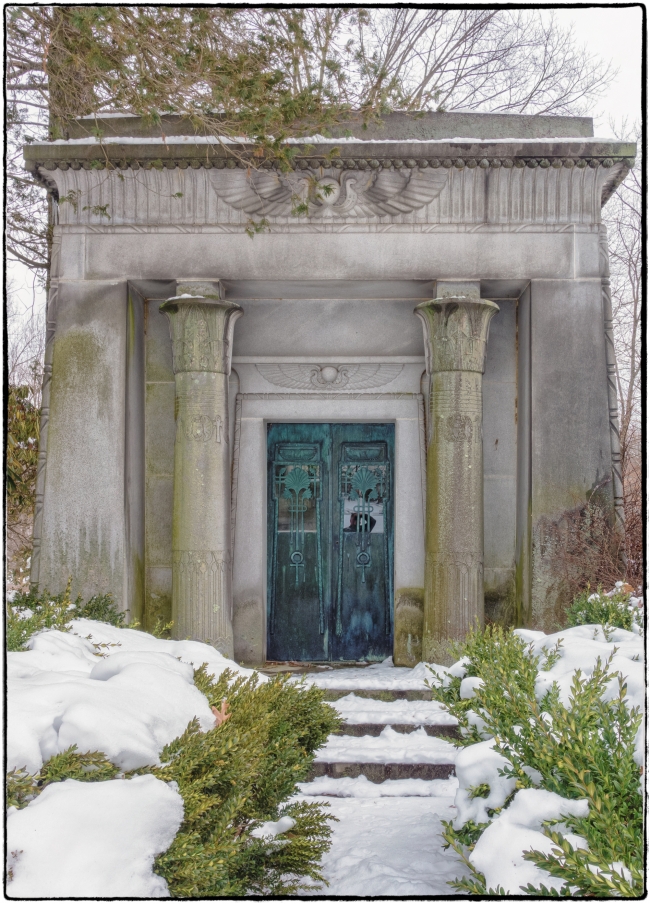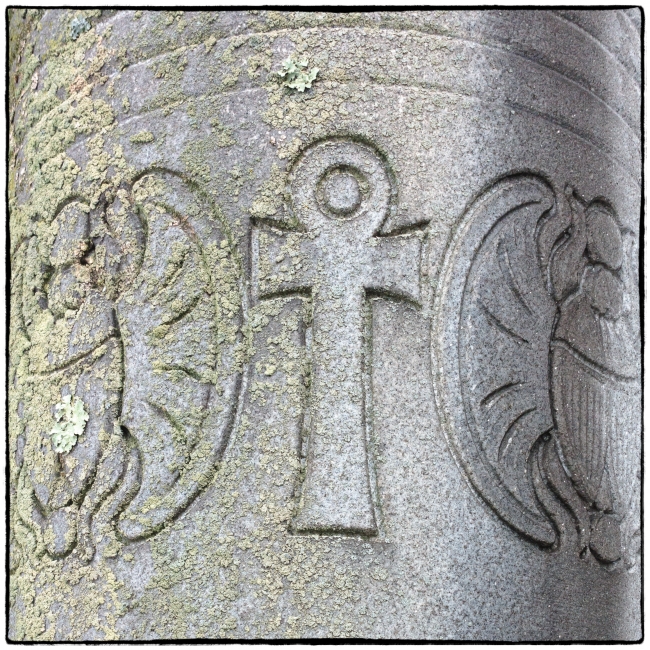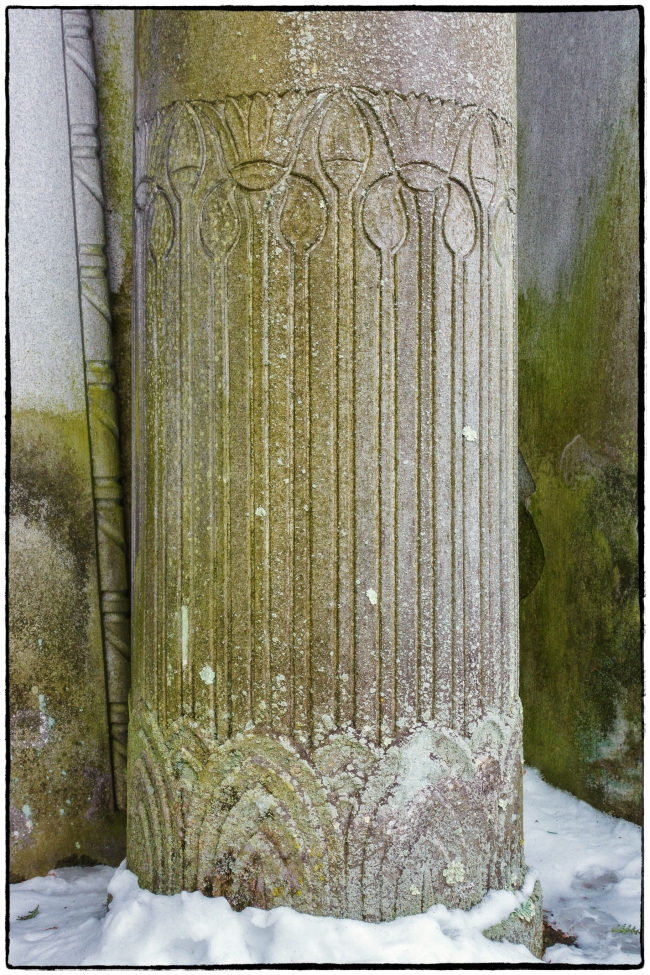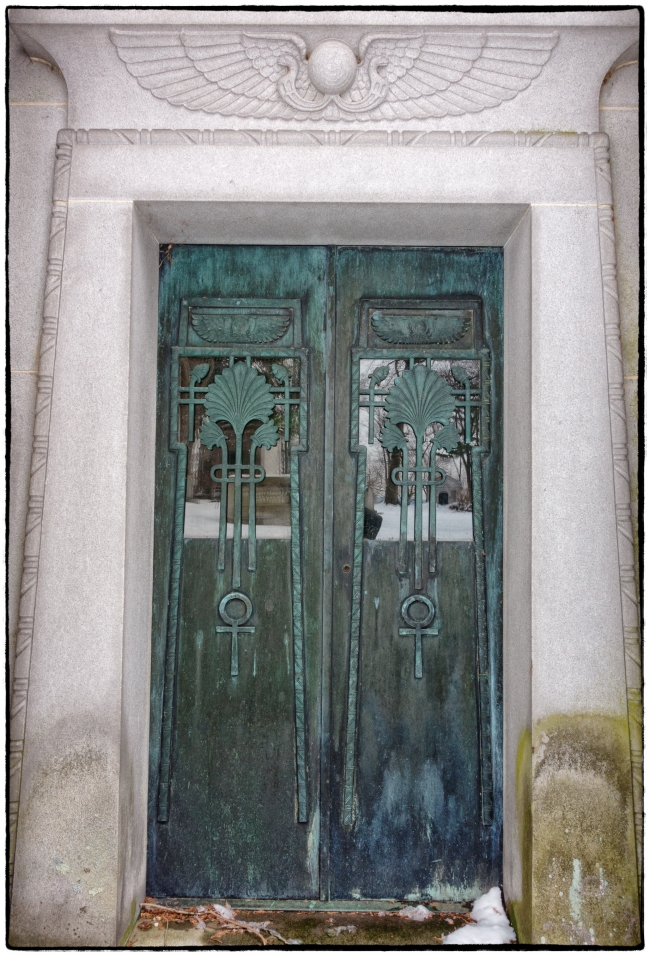In an earlier post (A fascination with cemeteries?) I mentioned four criteria put forward by Bill Jay and David Hurn to help a photographer identify an appropriate subject. One of them was:
Is it a subject about which I know enough? Eliminate those subjects about which you are ignorant, at least until you have conducted a good deal of research into the topic. For example, you are not contributing anything to the issue of urban poverty by wandering back streets and snatching pictures of derelicts in doorways. That’s exploitation, not exploration.
.
To which I answered: “Yes. I already know quite a lot about cemeteries, their history and symbology and my knowledge continues to grow.” These pictures illustrate how my knowledge has been growing.
Not too long ago I would probably have walked right past this mausoleum. Compared to many others in Sleepy Hollow Cemetery it’s quite small, and from a distance, hidden behind hedges it doesn’t seem to be anything special.
However, because of my increasing knowledge I suspected that there might be more to it and so I went over to take a closer look and came across some lovely details.
Scarabs and Ankh. The scarab symbolizes life. As for the Ankh – according to Thecemeteryclub.com:
The original meaning of this ancient Egyptian symbol is not known. One possible theory suggests that it combines the male and female symbols of Osiris (the cross) and Isis (the oval) and therefore signifies the union of heaven and earth. It is usually portrayed in ancient Egyptian art in the hands of a deity. As a hieroglyph, it likely encompassed a range of meanings depending on its associated hieroglyphs but all of these expressions centered around the concept of life or life-force. Over time, the ankh certainly came to symbolize life and immortality, the universe, power and life-giving air and water. “Its key like shape also encouraged the belief that it could unlock the gates of death”. The Coptic Christians used it as a symbol of life after death. The ankh has been used in magic and today it usually symbolizes peace and truth.
Lotus. Purity, Resurrection, Evolution, Potential. Commonly used in ancient Egypt and in Hinduism, the flower is sacred in Buddhism. It symbolizes the creation of life from the slime of the primordial waters. The closed lotus represents potential.
Pair of vulture wings sprouting from a circle (symbolizing the sun) and flanked by two cobras (symbolizing death). Behind the winds is a cavetto cornice (seen more clearly in the first picture above), which goes around the entire structure.
Entrance. Note that the vulture motif is repeated both on the cornice, and on each of the door panels. The door panels also repeat the lotus and ankh symbols.
I’ve come across Egyptian style mausoleums in other cemeteries and have always been surprised that such obviously pagan symbols (originating in many cases from thousands of years BCE) have been deemed acceptable in a predominantly Christian cemetery.





